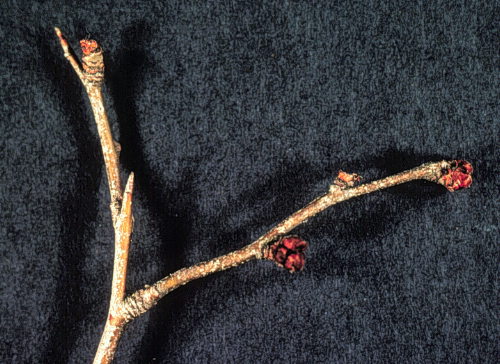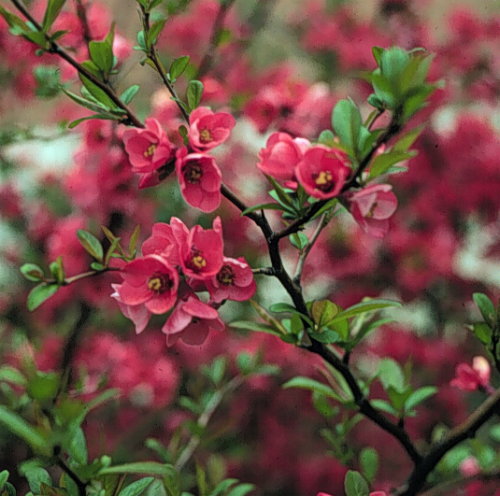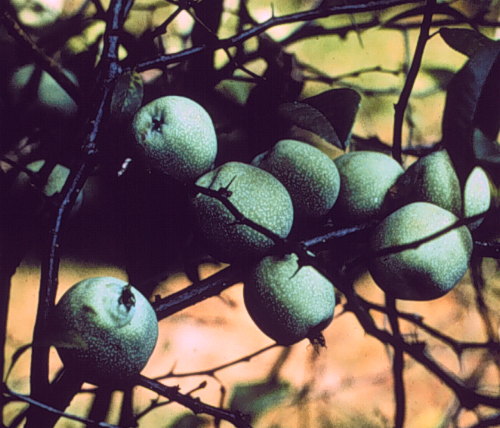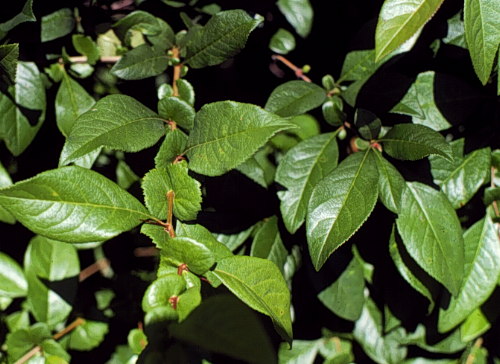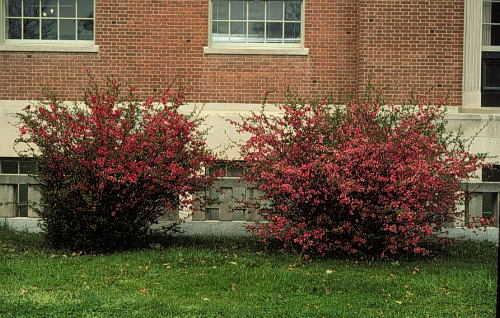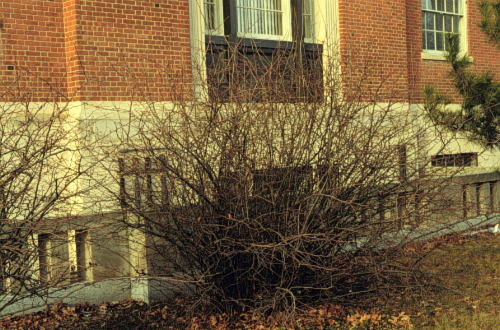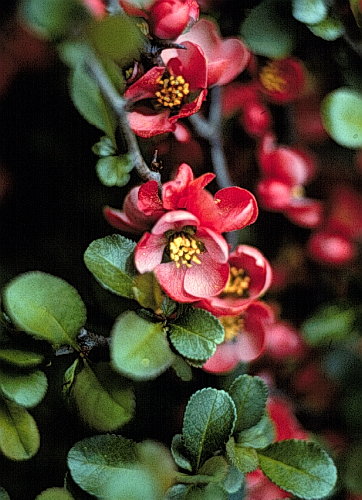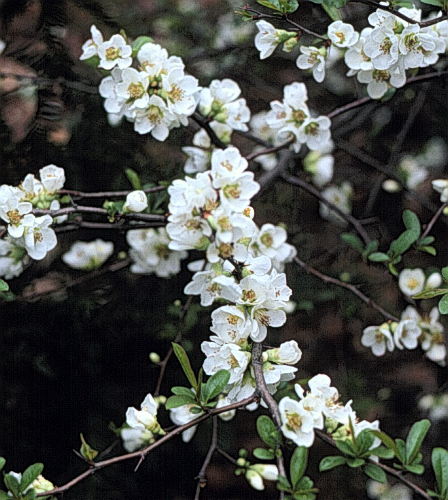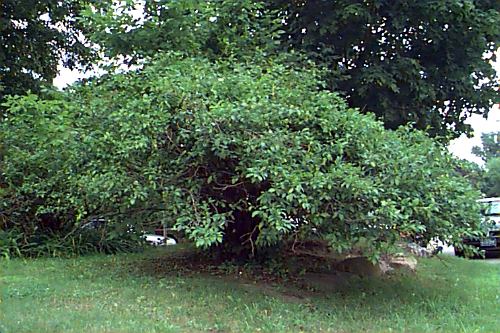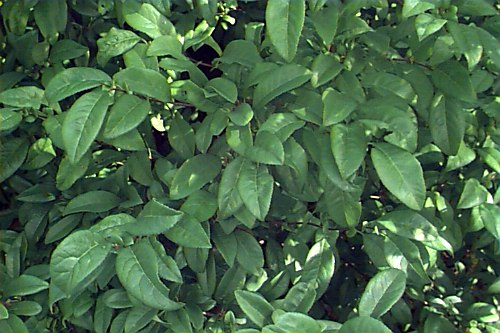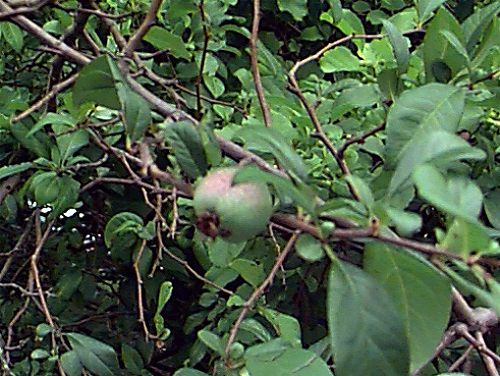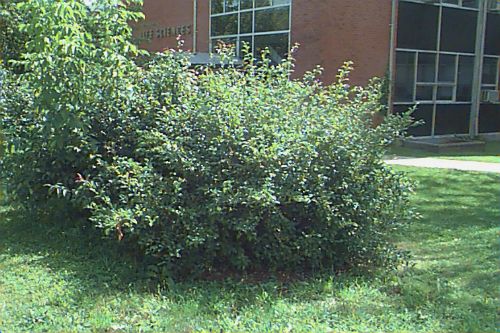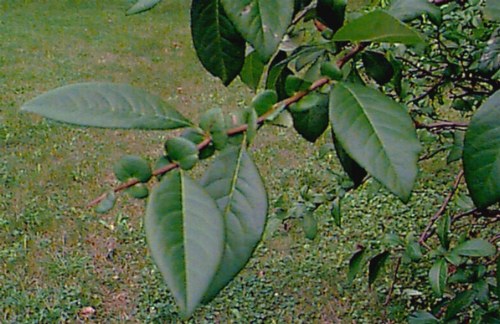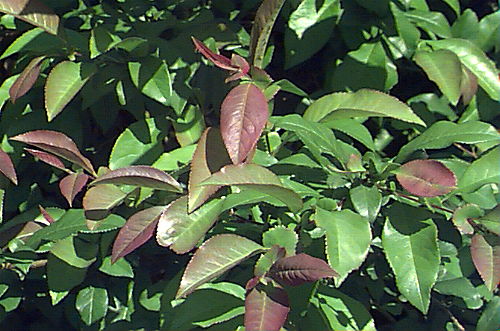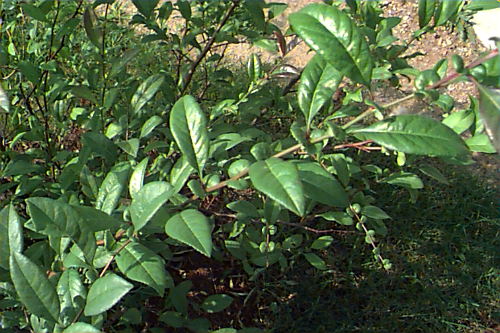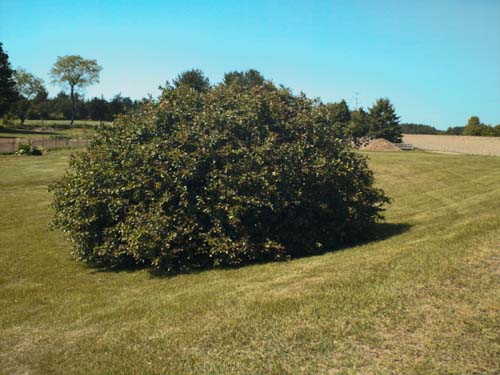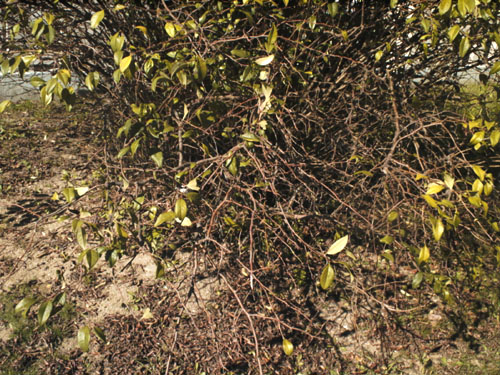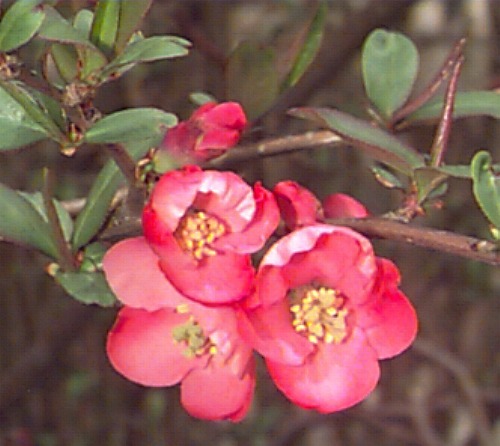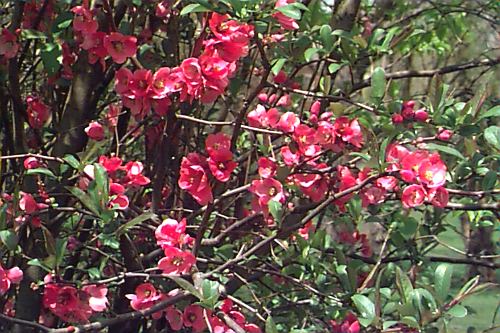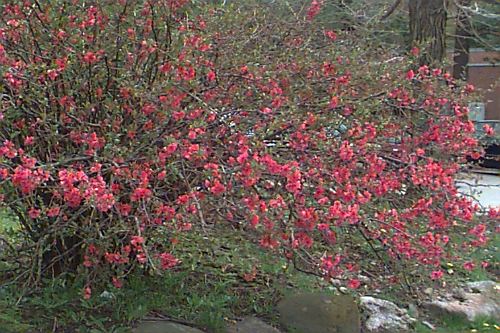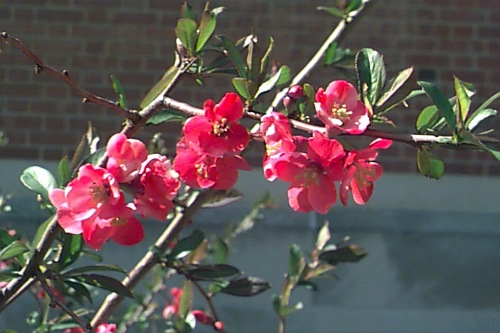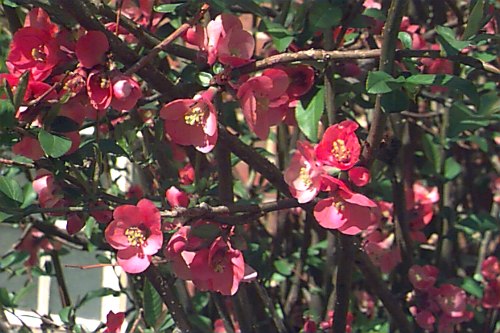Chaenomeles speciosa
Common Floweringquince
Rosaceae
ExpandHabitat
- native to China
- zone 5
Habit and Form
- a deciduous multi-stemmed shrub
- 6' to 10' tall with equal or greater spread
- generally exhibiting a rounded outline, but somewhat variable
- very dense with a tangled jumble of branches
- branches are spiny, or with spurs
Summer Foliage
- alternate leaf arrangement
- ovate to elliptical outline with an acute base and tip
- serrated leaf margins
- 1.5" to 3.5" long and about 1" wide
- large, readily noticeable stipules are present at the petiole base
- stipules can be as large as 1" to 1.5" across are rounded, and have serrate margins
- new growth emerges reddish-bronze and matures to a glossy, dark green
Autumn Foliage
- does not have fall color
- drops leaves green
Flowers
- the primary "claim to fame" of this plant
- blooms in April, before leaves
- normal color is red, but cultivars range to salmon, pink and white
- normal flowers are single, but some cultivars have double flowers
- borne on old wood in clusters of 2 to 4
- each flower is about 1.5" in diameter
- quite showy in full bloom
Fruit
- an apple-like fruit
- 2" to 2.5" long
- yellow green in color
- not ornamentally showy
- can be used to make preserves if harvested in October
Bark
- brownish
Culture
- an adaptable, easy to grow shrub
- tolerant of dry soils
- full sun needed for best ornamental display, although tolerant of partial shade
- periodic rejunvenation pruning can enhance the plants ornamental performance
- avoid high pH soil which will result in chlorosis
Landscape Use
- useful for early spring flower display
- single season ornamental appeal should restrict its use to more difficult sites
- shrub borders
- hedges
- barrier
- mass plantings
Liabilities
- apple scab can cause significant defoliation by mid-summer
- scale, mites and aphids can be problematic
- chlorosis on high pH soils
- twigginess and thorns collect leaves and garbage
- fireblight
- no fall color
- flower bud injury in cold winters
- single season ornamental appeal
- rabbit damage
- partial or sporadic fall bloom (not enough to be showy)
ID Features
- large stipules at the base of the petiole
- unbranched thorns or spurs
- red-bronze new growth
- apple-like pome fruit
- showy flowers in April
Propagation
- summer cuttings root easily
- seed requires cold stratification
Cultivars/Varieties
Many cultivars exist, but those listed below are most common.
'Cameo' - Double, apricot-pink flowers. A low growing selection (4' to 5' tall) with bright green foliage and few thorns. Plant has good clean foliage and appears disease resistant, thus many observers consider the plant superior to ther cultivars.
'Contorta' - This form, with twisted stems and white flowers, is appearing more frequently in the trade. The contorted branches can be showy in the winter landscape.
'Jet Trail' - A low-growing form (to 3' tall) with pure white blossoms.
'Nivalis' - A vigorous, upright grower with spiny branches. White, single flowers in April.
'Texas Scarlet' - A low-growing plant (to 4' tall) with few thorns. Blooms are bright red, considered among the best. The apple-like fruit may also be used for culinary purposes. This cultivar may be a selection or hybrid of C. japonica.
'Toyo-Nishiki' - An unusual form with red, pink and white flowers in the same flower cluster. Upright, rounded habit with spiny branches (growing 6' to 10' tall). While the flowering habit is unusual and the plant is very hardy, some reports indictate that it may be more prone to fireblight disease.
